Raise your hand if you’ve ever had lower back pain after working out? Discomfort after standing too long? A tender sacrum that sends you to the chiropractor every other week?
Every person in this world deals with asymmetry and imbalance in their body. Because our bodies are meant to move, it’s not realistic that we will ever get our bodies to “perfect alignment.”
Because of our imbalances, all of us have some lack of specific muscular activation. Adding to that, we tend to move in repetitive patterns formed in early adolescence which affected our skeletal and muscular growth.
Over time, these movements and lack of muscular activation have been exacerbated. Our connective tissues and fascia have become less pliable thanks to the sedentary, modern lifestyle. We find our skeletal structure compromised, with a ripple effect on the rest of the body. You might know this as: pain.
Pain is a direct result of the body sending electrical impulses to the brain when you move a joint past the “end range” of a specific motion.
In our alignment-focused Barre platform, we make a big deal out of one word: neutral.
Why? So that your muscles can effectively engage on both sides of the joint, creating safety, stability, and symmetry.
What does neutral mean in anatomy?
Your Neutral Pelvis
The pelvis is the heaviest structure of the female anatomy, but, pound for pound, varies tremendously in the male anatomy.
It doesn’t matter if you are a man or woman, however, placing your pelvis in neutral is the KEY factor for balanced activation (in every anatomical plane) within your deep core (transversus abdominis) and gluteus complex (the two muscular groups responsible for allowing human beings to stand upright).
Asymmetry and instability due to lack of muscular activation can place undue strain or tension on your spinal column, frequently leading to acute or chronic pain and lack of mobility.
If you are able to find neutral in your pelvis, you may then be able to move with intention and support in any exercise or activity. BUT HOW? Don’t worry, we’re soon to teach you…
Your Neutral Spine
Your spinal column exists to protect the most important neural pathways in your body. Brilliantly, it has specific undulations (known as lordosis and kyphosis) in order to cushion and protect itself from aggressive biomechanical movement.
A neutral spine is an optimal way to attain balance and proportion and places the least amount of stress on your body’s tissues.
A spine in neutral optimizes breathing and affects the circulation of body fluids. It also creates activation of the correct muscles during movement.
How to find neutral in your unique body
We’re really passionate about helping you figure out this thang called neutral in your body. So we made this video below 👇 AND we have some more helpful pictures after.
You can watch the video, you can look at these pictures… But the best thing to do is get up and try it on.
Find Neutral From Standing
We call this “duck butt” or more professionally known as an anterior pelvic tilt. Some people have this in their natural alignment, some don’t. Do you have an inward curve at your low back?
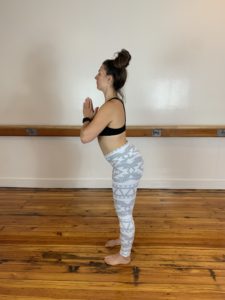
We call this “cowboy/girl butt” or more professionally known as a posterior pelvic tilt. Some people may have more of this in their natural alignment. Check it out — do you have a posterior pelvic tilt?
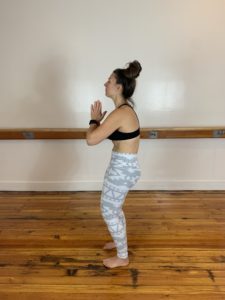
This is what we call NEUTRAL! The beautiful space in between. It’s important to note that the process for finding neutral is different for every body.
If you have more of a natural anterior tilt, then neutral will look like a significant lengthening of your tailbone toward the ground using core engagement.
If you have more of posterior tilt, correction is much more subtle: like finding supportive exercises that lengthen the origination point of the psoas major (putting a block under the ribs and above the hip bones and laying on top of it for 3 mins – as long as you’re NOT pregnant).
Please note that the process of finding neutral is different for everyone – it’s not a one-fix-for-all approach.
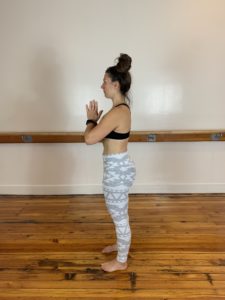
The best way to find neutral in your body is through a process called “bookending,” where you essentially sway between postural extremes in your body.
To do this, find a maximum anterior tilt of your pelvis. Then find a maximum posterior tilt of your pelvis. Gently sway back and forth, smaller and smaller, until you feel that you’ve arrived at the center place. Refer to the video for a visual of this process.
Applying better posture to fitness — yoga, Barre, and more
As you get more comfortable with your neutral alignment, be sure to bring it into your workouts — whether that be yoga, Barre, weight lifting, etc. This alignment is always relevant. Pro tip: waiting in line at the grocery store is the perfect time to practice good alignment!
If you don’t have a neutral spine and pelvis in your workouts, then the rest of your body cannot engage effectively. As you get more familiar with this, know that your postures might look and feel a bit different, but ultimately this is safer and stronger.
FOR EXAMPLE. Check out this alignment work in plank pose.
Can you see this anterior tilt? This is what a plank looks like when the core is engaged 0%.

How about this posterior tilt? This is low back strain waiting to happen.
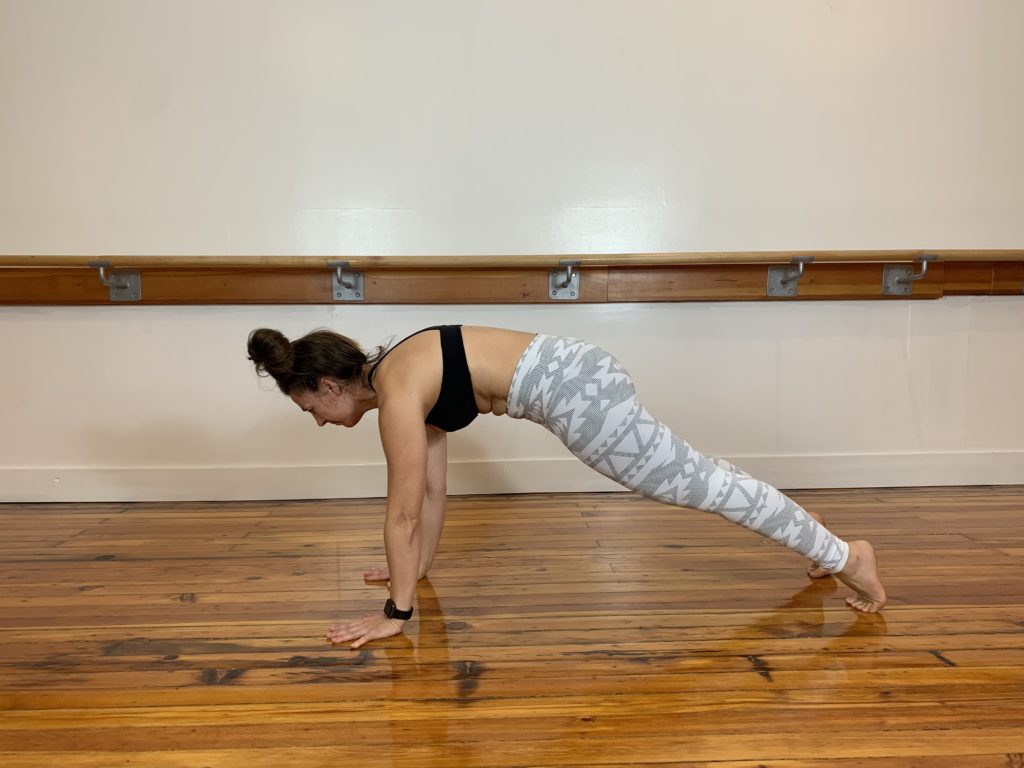
This one’s where the money’s at. Notice the length of her low back. In this posture, the pelvic floor and deep abdominals can engage more effectively. Then, the rest of the body can better strengthen (legs and upper body).
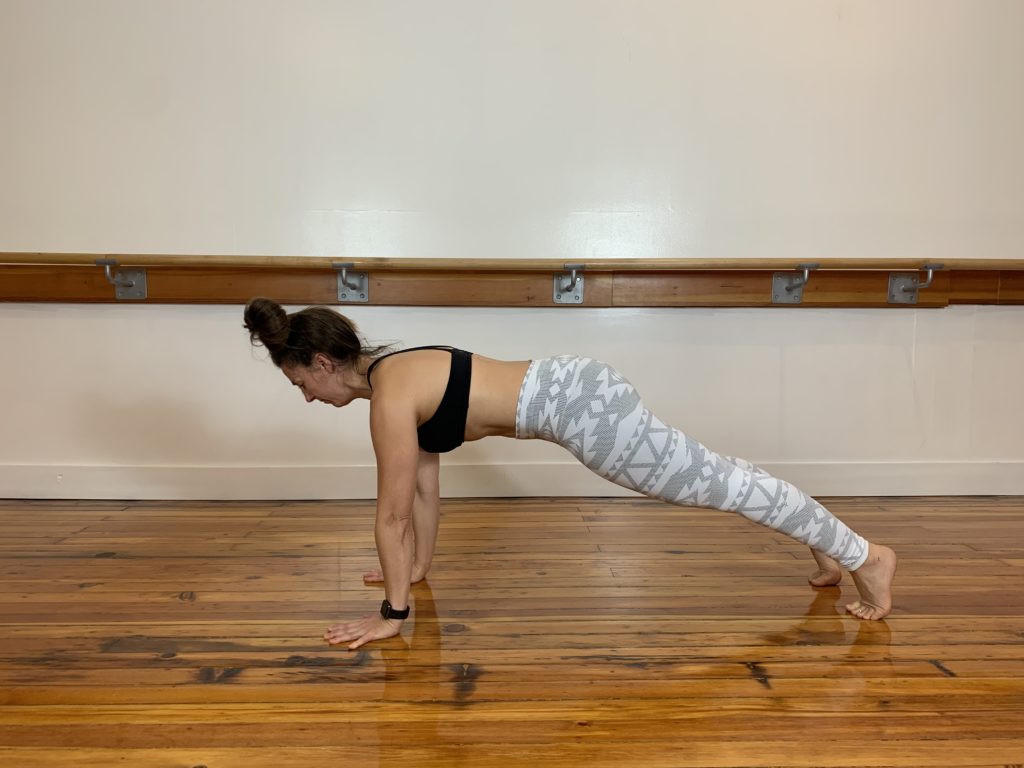
Finding neutral in Barre class
If you’ve ever taken a Barre class, you know that finding neutral is a big deal, and it’s relevant in virtually every position. It’s for the same reasons — as you find neutral, you’ll be able to recruit the transversus abdominis — ie. the part of your core with the most strength-potential.
You’ll also be able to involve the pelvic floor and feel the deep support from that engagement. Once you have everything aligned and engaged correctly, get ready to watch your strength skyrocket… Though it does take determination and focus.
Check out the video above if you’d like to see what fiding neutral looks like at the Barre.
We know that this anatomy is not easy! It takes some playing around. Please, pretty please, comment below if you have questions. We love to help.
Until next time — happy bookending 🙂